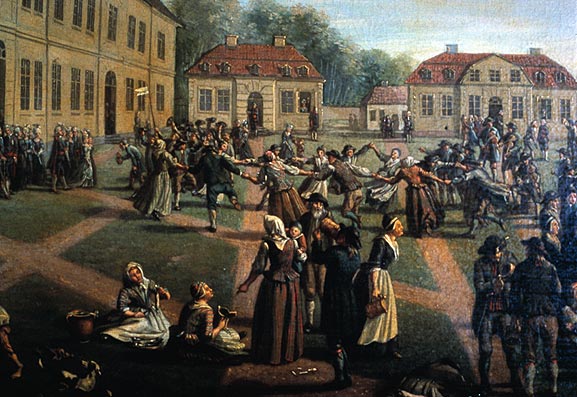 |
| The Embroidered by Jean-Baptiste-Simeon Chardin, 1736 |
April is more
than halfway through and I feel the need to reevaluate my sewing for this year.
I started out aiming to not start any new projects, but only finish off all my
already started ones. That hasn’t been an absolute success. I have finished two
of my old ones, the Edwardian blouse and the late 18th century hat,
but I have also started two new ones, the covered stays with sleeves and a
1930’s evening gown. As I managed to get the flu, the evening gown didn’t get done
for the party I had planned it for, and is right now on hold. The stays with
matching petticoat have to be finished in May. I have also started two projects
that were planned, J’s wild man’s dress and the piemontaise.
The To
do-app has been a very good help. It’s easy to see what I have planned and it’s
easy to change priority of projects. As of now my A listed projects are these:
18th
century: The covered stays and petticoat in pink brocade. I’m currently
covering the stays, which is the most finicky part. The sleeves are probably
quite straightforward and I can sew petticoats in my sleep. Only they take
forever to hem.
The pink
A-line jacket I started years ago. It still only needs a stomacher and as I
plan to wear it in May, it has a deadline as well.
The 40’s
wardrobe: Raincoat with two sides, the two fabrics needs to be attached to each
other.
Brown
jacket. I’m making adjustments for a second fitting
Other
historical costumes: A dark purple 1640’s gown
Other
sewing projects: Checkered skirt. Needs buttons and hemming.
The idea
now is to really, really not start anything new the rest of the year. So many
of my projects are in the almost done-state and if I set my mind to them and
finish them, I will feel terribly accomplished. For example, the blues stays
only have a couple of hours work left on them, and the embroidered polonaise is
more than halfway done as well. But as it has been a lot of 18th
century for the past months, I plan to concentrate more on my 40’s wardrobe
now. I have one white and one dotted dress that are almost done, for example.
 |
| Late 18thc. sewing box with straw work and parquetry |
I don’t
want to get myself any more hard deadlines either; there have already been too
many of them this year, and after May I will try to work without stressing out.
I’m still going to try to fit in as many projects as I can into Historically
Sew Forthnightly, but f I won’t make it, I’m going to let it go.
One damper
on my sewing this year has been sore neck and shoulder, at times it has been so
painfully that I haven’t been able to sew. This is only my own fault for not
taking breaks and moving. The last month I have re-started my Pilates and try
to do 30 minutes of it every third day. I have also started to time my sewing
and take a small break after one hour of sewing to move a little, My shoulders
and neck has got so much better in just a few weeks, so evidently I do
something right.











